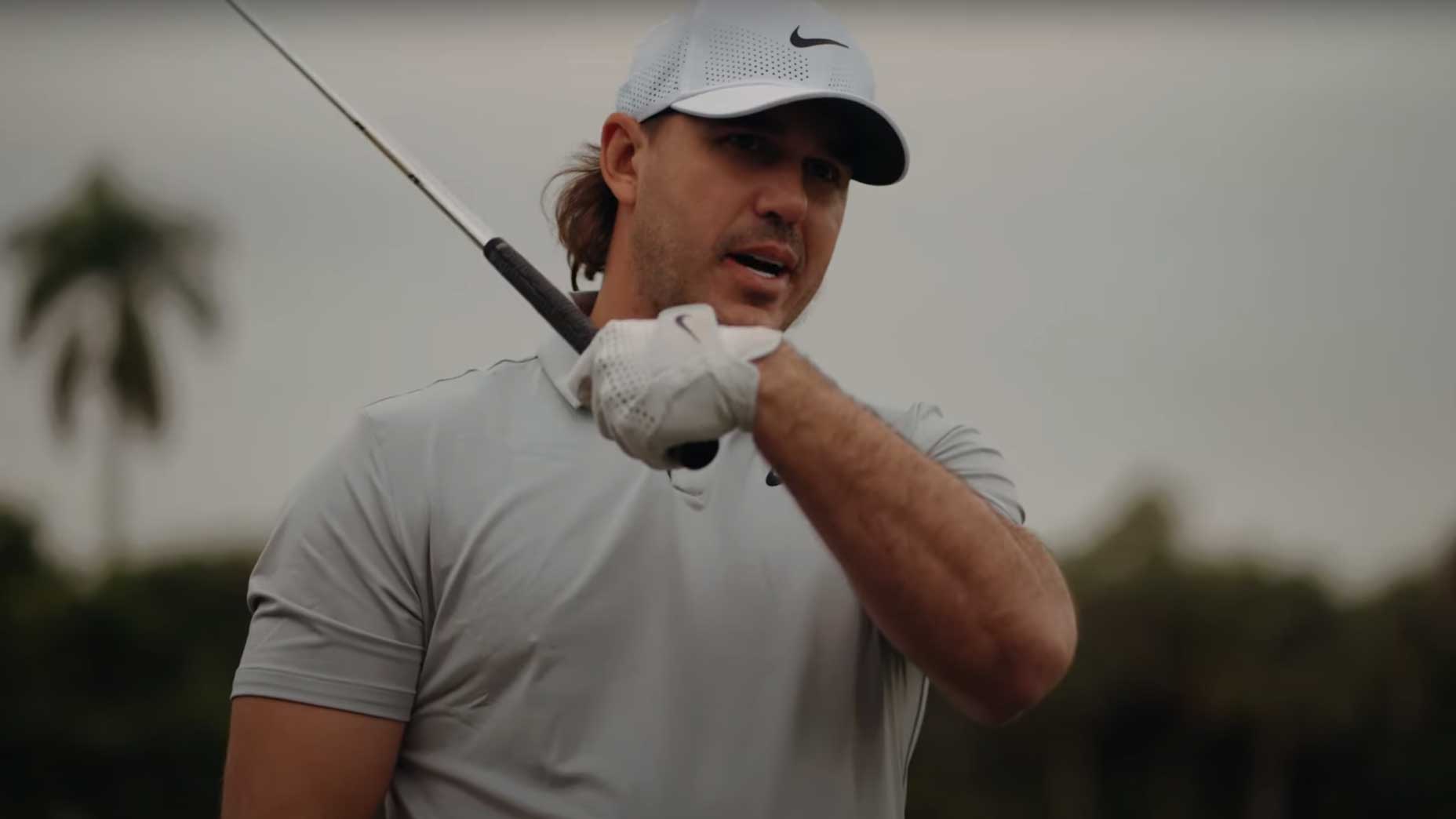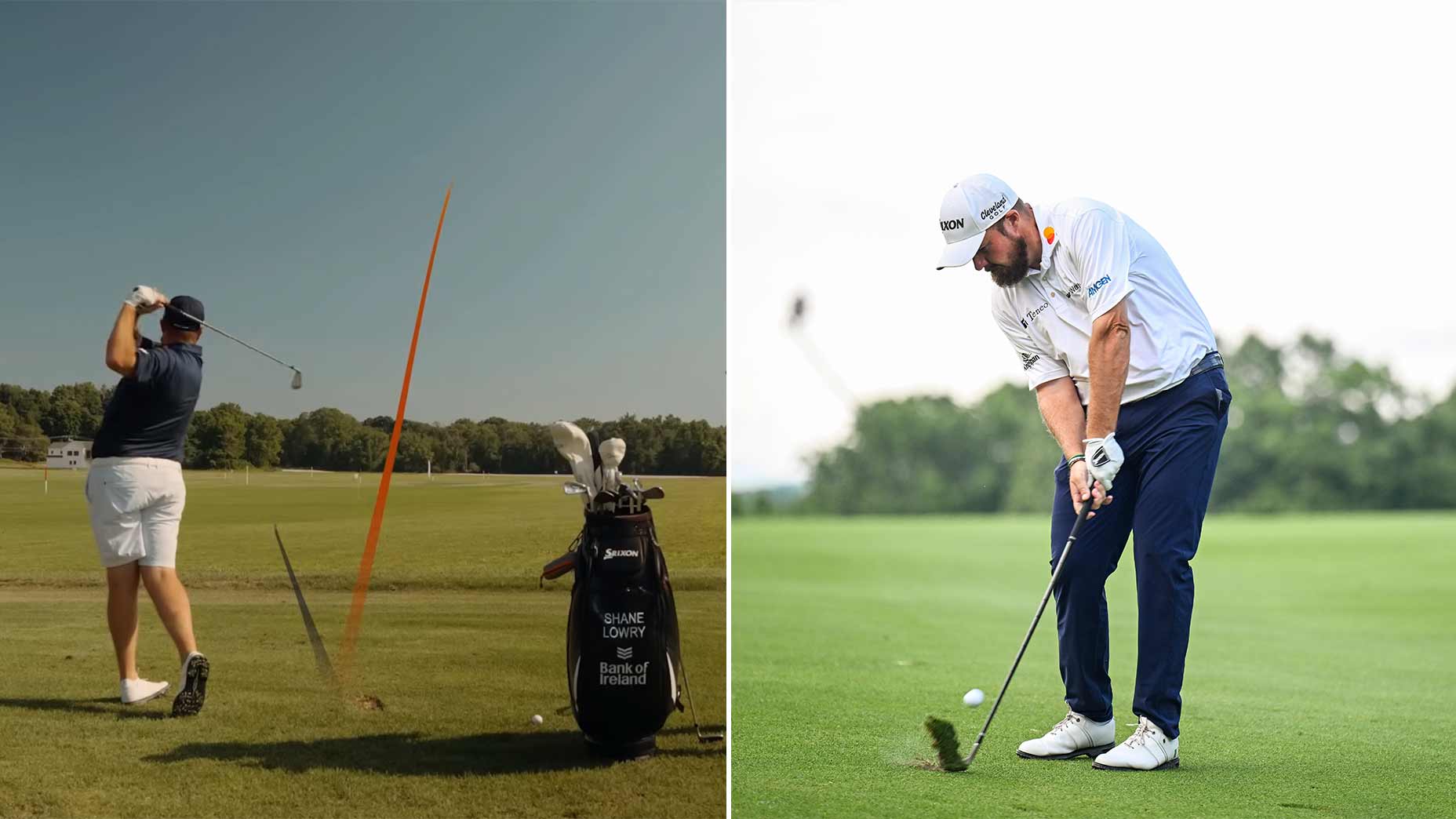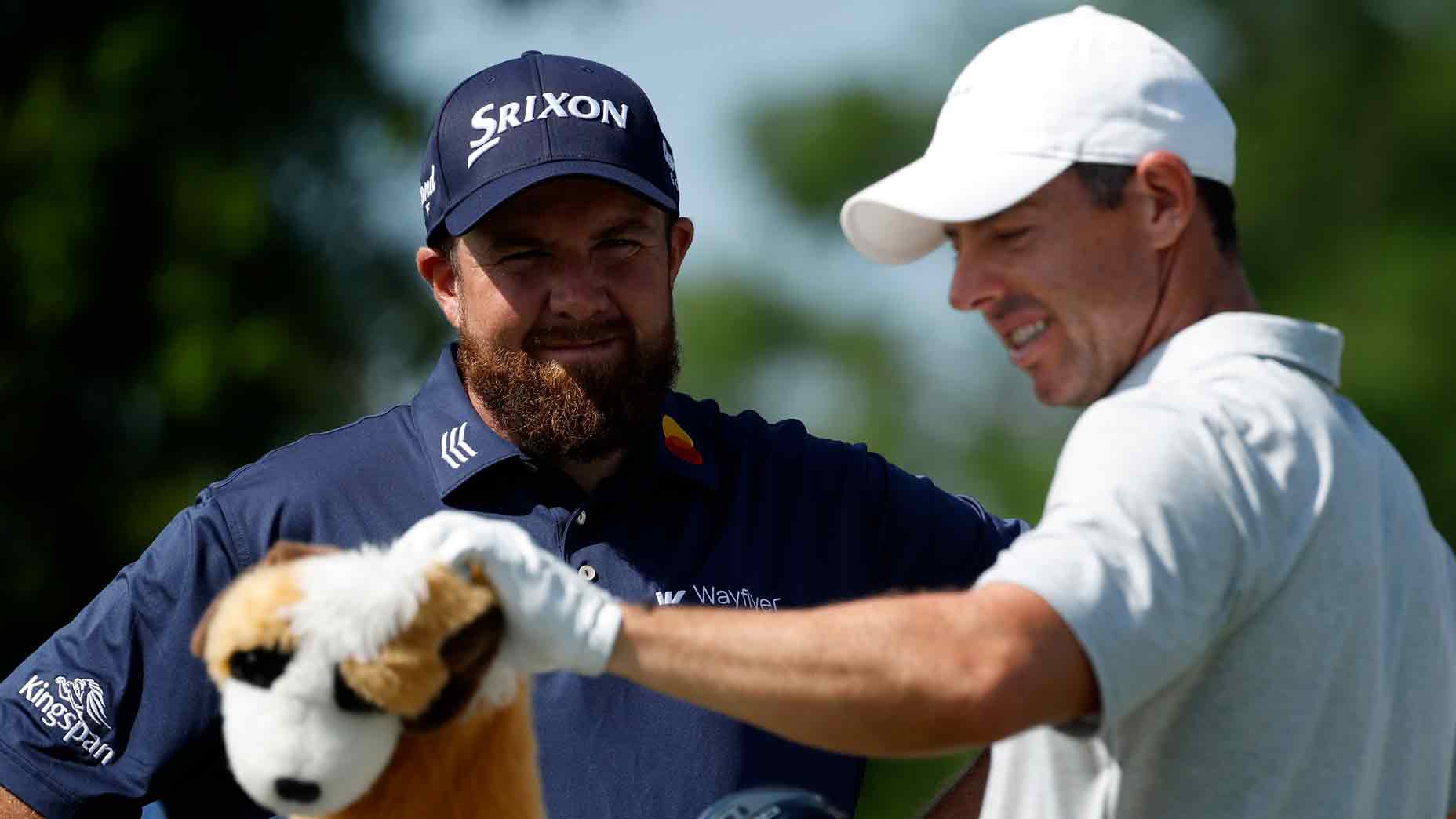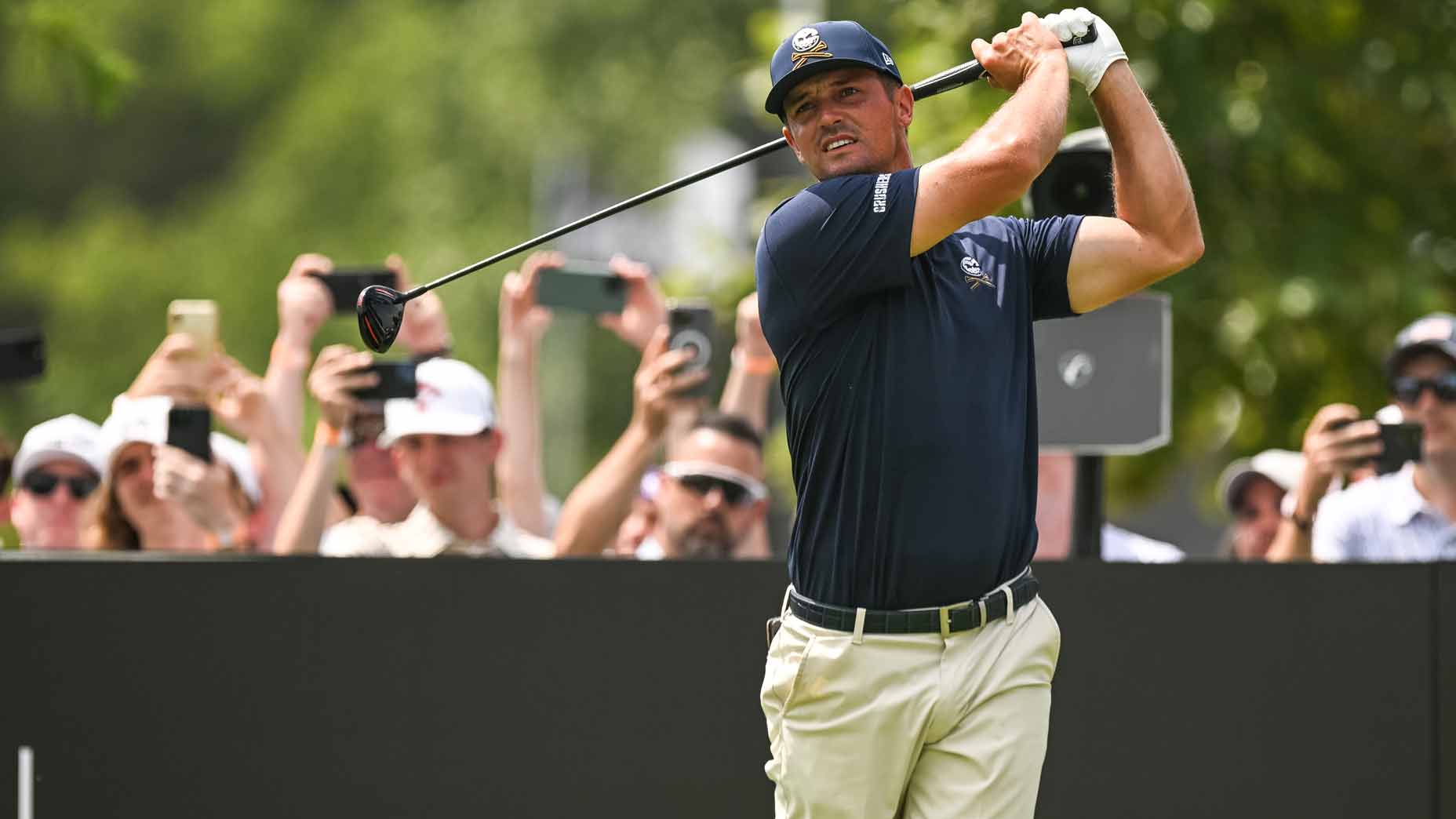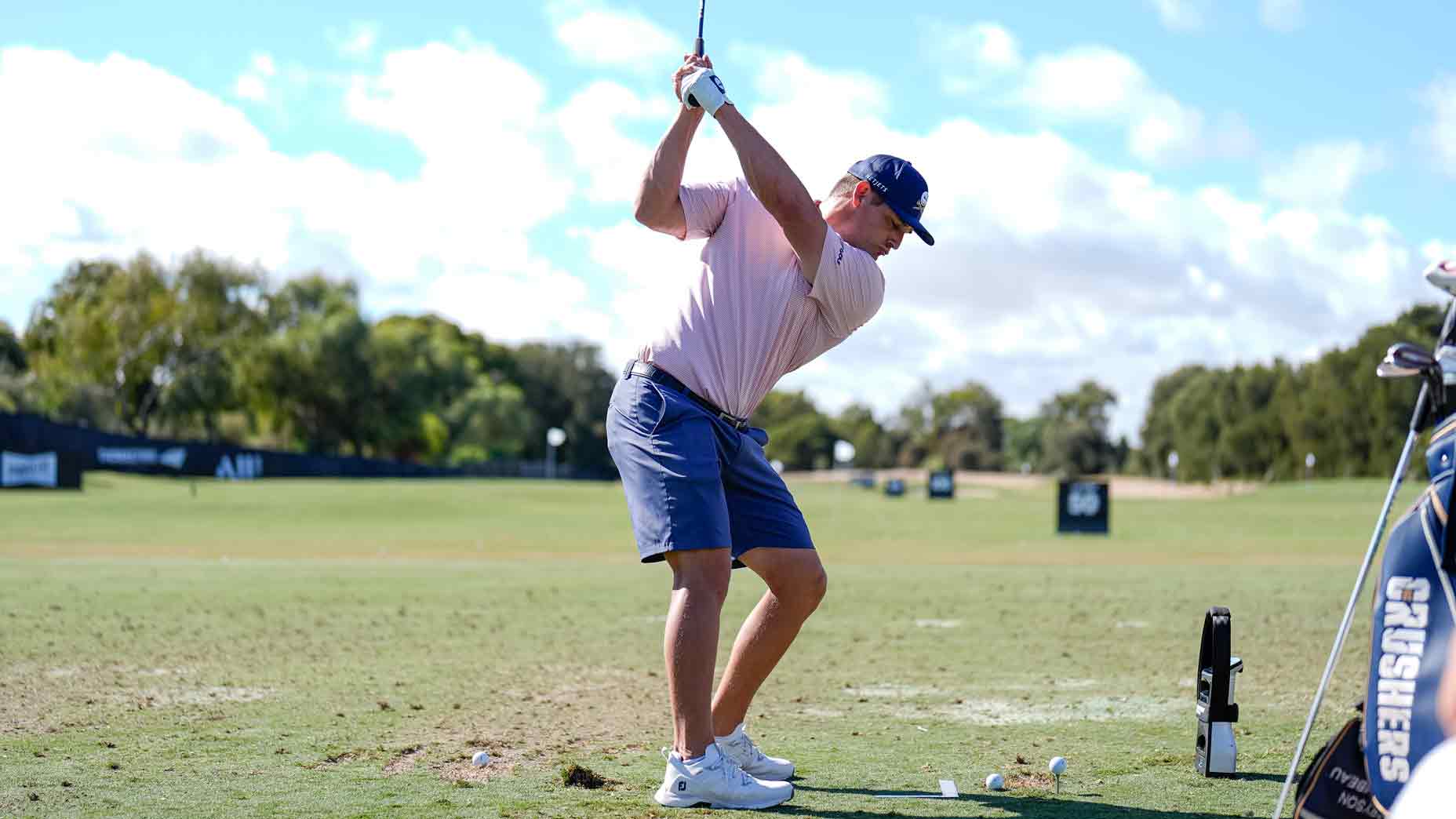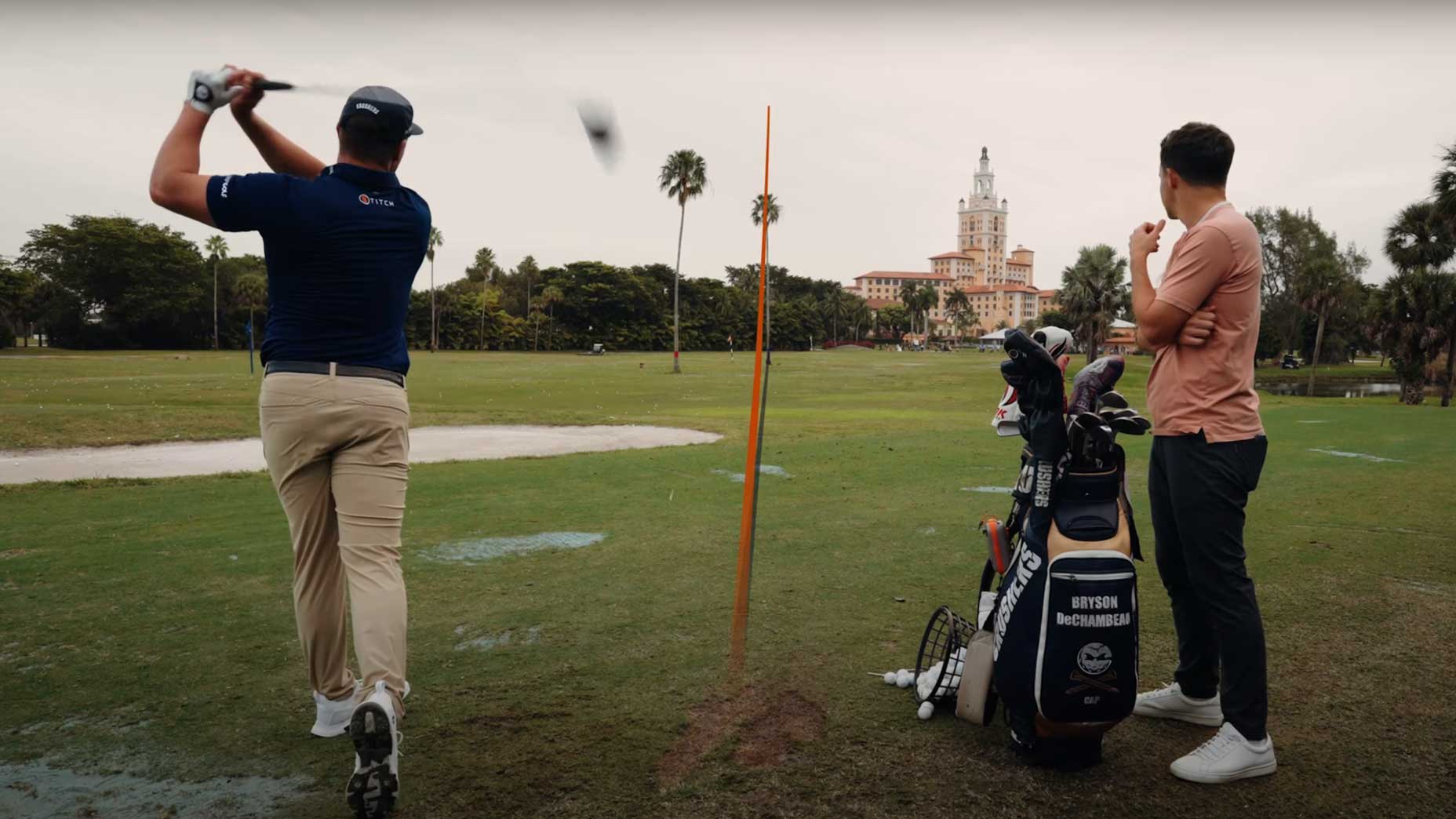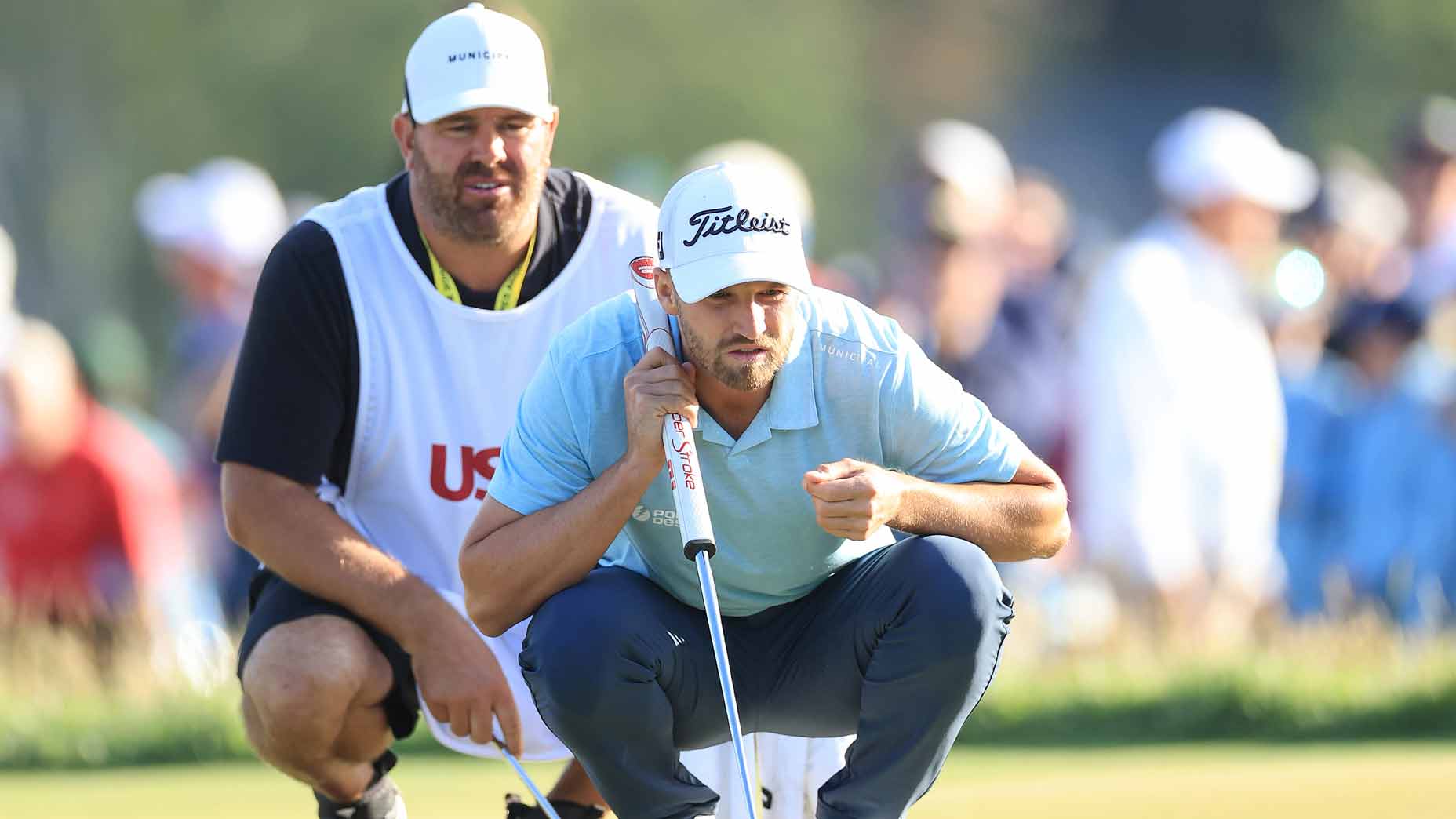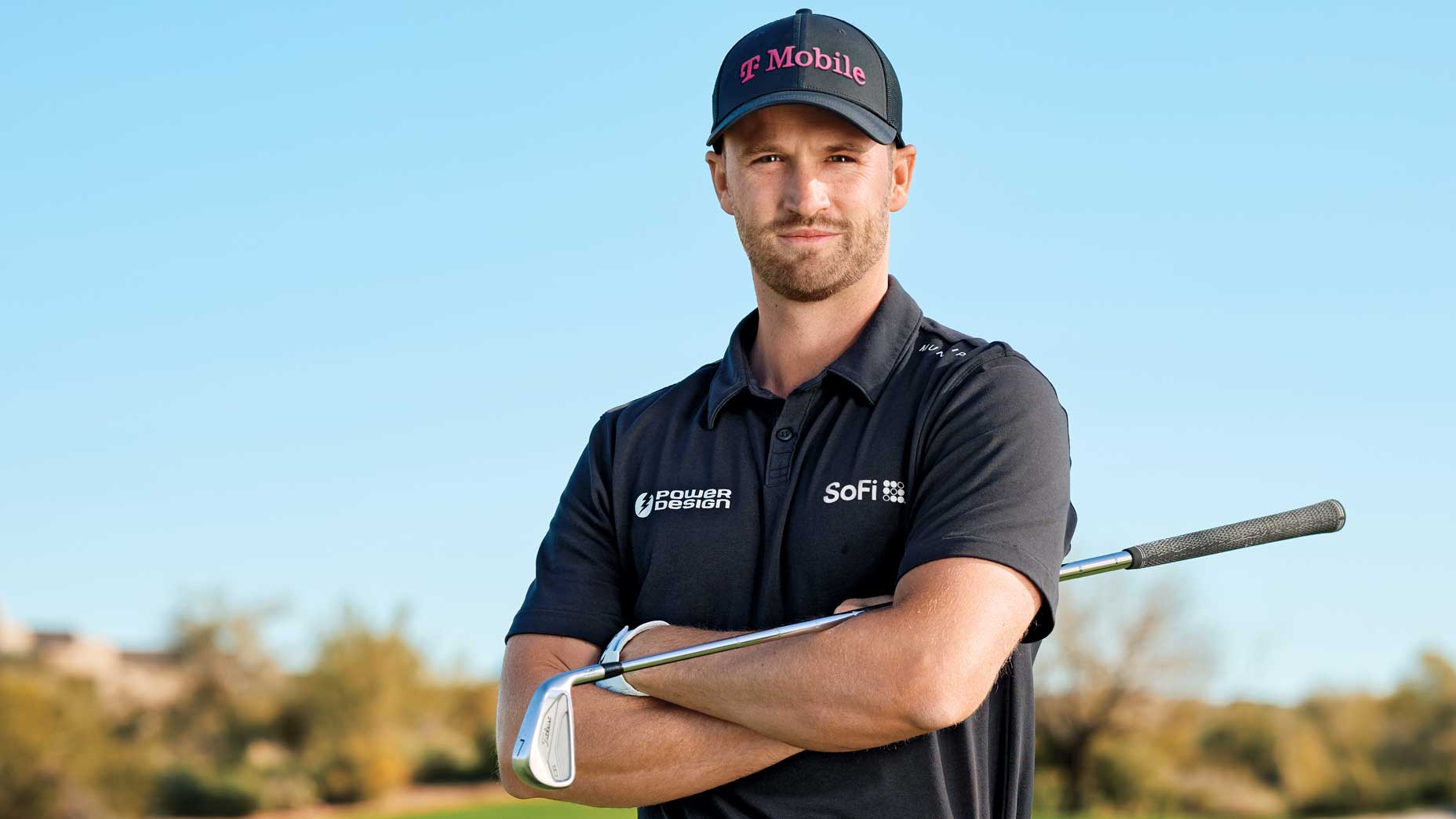Wyndham Clark taught me 6 driving-range secrets in 30 minutes
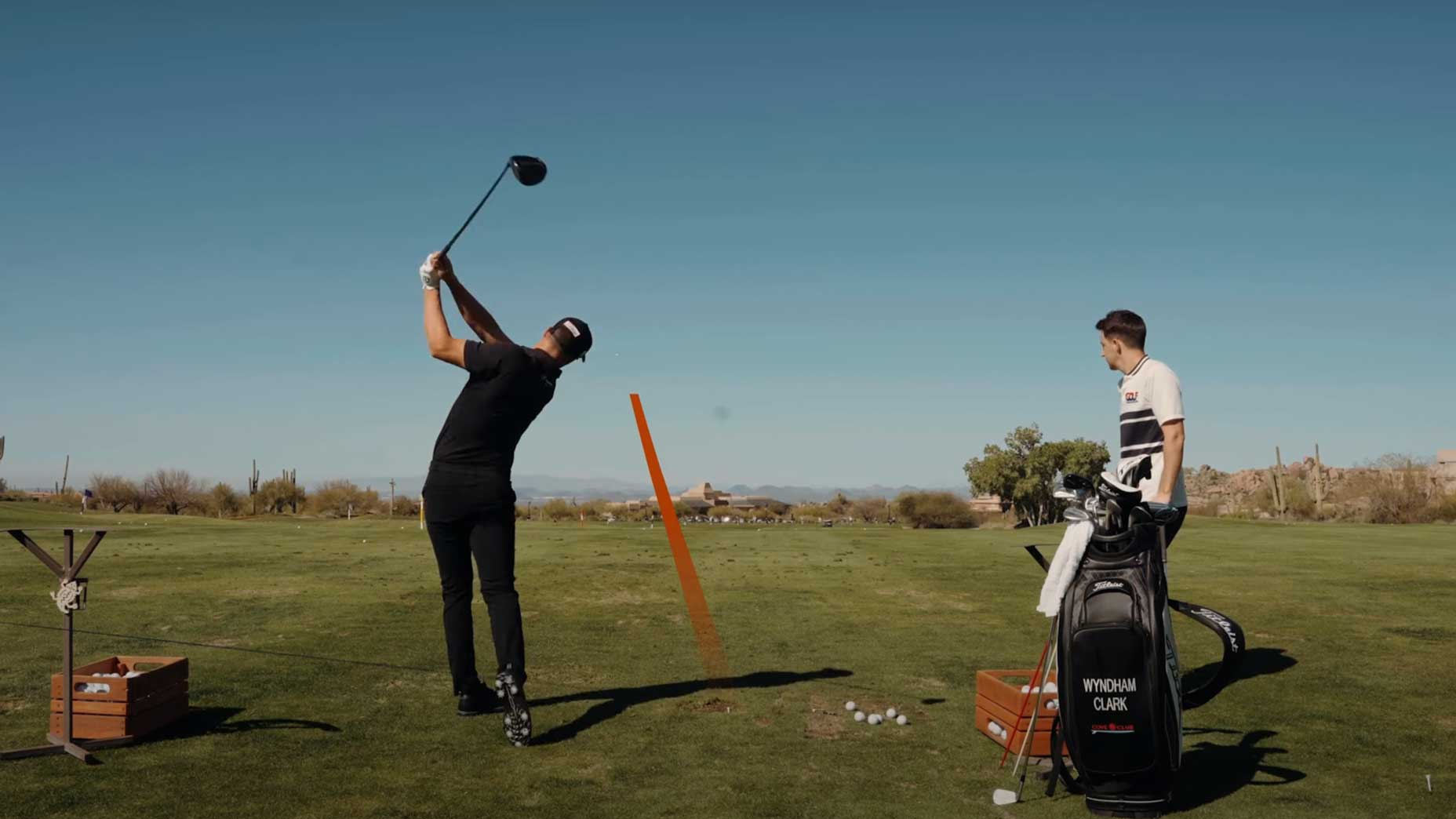
Wyndham Clark is the latest guest on Warming Up.
Emma Devine
Want to warm up like Wyndham Clark? We can’t blame you. He’s the reigning U.S. Open champ, after all. He owns the course record at Pebble Beach; he’s the defending champ there, too. He’s the fourth-ranked player in the world, so he must be doing something right.
Good news for us — and for you — is that he’s also the latest guest on Warming Up, where he joined us on a bluebird day at Troon North near his home in Scottsdale, Ariz. and taught us a thing or two or six. So if you want to warm up like Wyndham Clark, read on and play big.
1. Activate those glutes. (Yes, seriously…)
Clark gives himself about 70 minutes once he actually gets out in the practice area to hit balls, chip and putt. But before that he’ll spend 30 minutes in the gym. What’s he doing there?
“It’s muscle activation. I’m actually doing somewhat of a workout, trying to get a sweat, get the heart rate going,” he says. The idea is to get his body ready to the point where if he had to go straight to the 1st tee he could. When he says “workout,” though, he doesn’t mean curls and bench press. Instead:
“Activate the glutes,” he says, somewhat reluctantly, echoing a longstanding Tiger-ism. “It’s making sure that all the muscles you use in the body for golf are all kind of firing and going. So I do a lot of core, I do a lot of stuff for back so that my posture’s really good, a lot of rotational stuff, a lot of stuff for the glutes and the hamstrings.
“And then a lot of explosive stuff. Because golf, contrary to some belief, it is an explosive sport; you’re pretty still and then you set up and swing it 125 miles an hour. And so I try to work that out in the gym so that my body’s ready to go and swing it fast and do everything I need.”
You might not swing it 125. But you can get your engine warmed up regardless.
2. Tee up your wedges.
Clark always starts his range session with a gap wedge. And he tees ’em up. Yeah, seriously. A top-five golfer in the world is hitting gap wedges off a tee. Why? Two reasons.
The first is to dial in ball position and setup. He uses two alignment sticks — one to point to his target, another set up perpendicular to point at the tee — essentially building out a foolproof way to put the ball in the right spot.
The second is to dial in his swing path. Clark doesn’t want his swing to get too steep.
“I tend to be steep,” he says. “So under pressure … I start swinging really left, big divots, swipey cuts. And so what I’m trying to do here is neutralize that and do the opposite so when I get into competition [my ball flight] is where I want it to be.”
Clark tries hitting high draws with these wedges, picking ’em clean with limited divots. He gets in touch with how his body’s feeling. And if something’s amiss — if he’s hitting cuts, pulls, pushes — he’ll check out his ball position and setup to see what might be amiss.
He gets some odd looks on the range sometimes.
“Like, you’re hitting a wedge off a tee?”
But some 18 months ago, when Clark decided to go swing-coach free, he wanted a push in the right direction. After reaching out to a few coaches he respects, he zeroed in on two pieces of advice: his ball position is too far up and he should chase the feeling of hitting tight draws. Enter the tee drill. In that period Clark went from being outside the top 150 in Strokes Gained: Approach to top 40.
“This is my swing coach,” he says.
3. Start with your fundamentals. Then start to visualize
Clark uses the tee and alignment stick grid to dial in his fundamentals and essentially find zero. He compares the exercise to players using a putting mirror on the practice green.
Once he’s comfortable, though?
“Now I start hitting shots,” he says. “I’ll go at a flag and start hitting little cuts, little draws. And I’ll prepare myself for the day.”
His caddie John Ellis will walk him through it, he says, feeding him shots like they’re interview questions.
“He’ll be like alright, hit a tight little draw, we need like five extra yards here,” he says. They’ll tap into the day’s plan. Assuming Clark hits a perfect tee shot, here’s the shot he’ll have next.
“If it’s a back left pin on whatever hole, [Ellis] says I’m going to have 148 and I’m hitting my pitching wedge 144 that week, he’ll say I need to hit it four or five extra yards,” Clark says. “I’ll hit a tight draw to try to gain that extra yardage and so I’ll set up and visualize the shot.”
4. Want to shape shots? Start with your fundamentals
Clark likes to hit cuts. “That’s 70, 75 percent of the time,” he says. But he also likes to work the ball with his mid and short irons, depending on the situation. Once he gets to 5 iron and below, he’s more likely to be a consistent shape. But from 6 iron down?
“To add yardage, take off yardage, get to certain pins, I’m either cutting it, hitting it straight, drawing it, whatever it is,” he says.
So how would he hit a cut or a draw? He’d start with his fundamentals. Remember that cross-shaped alignment stick setup he started with? He’d shift that a bit. Adjust the train tracks so the feet are pointed further left and the ball is slightly further up in his stance. But he’ll keep the club face open compared to his stance — still facing at the target, basically — and then he’ll swing through, holding the face open as he does.
“I think it makes it a little more fun, too, trying to shape shots,” he says. “It helps your misses.”
I asked Clark if he prefers to ride the wind — hit a cut with a left-to-right wind, say — or if he prefers to hold something off against it.
“I bet I ride the wind more than I hold it,” he says. “I feel like anytime I try to fight the wind I hit bigger misses. Versus if I ride the wind it’s always working the direction of where the wind’s going.”
He has an example.
“If the wind’s off the left and it’s a left pin, a lot of people are like, ‘Let’s hit a draw.’ Well, my miss with a draw is to come out of it. So I come out of it, block it, the wind takes it. Now I’m so far right that [I’m] in a bad spot. Versus if I say y’know what, maybe I should aim a little bit left and hit a tight straight ball or a cut, now it starts left of the flag and it’s working towards the flag, maybe it’s a little away but never way over here [gestures right]. That’s how I’ve always done it.”
5. Practice tough tee shots.
As he works his way up from short irons through long irons and to his woods and driver, Clark likes to visualize tough tee shots from the course he’s about to play. We’re visiting shortly after he’s wrapped the Players Championship, so he still has No. 5 at TPC Sawgrass on his mind.
“We’ll go to the tee ball on the 5th hole,” he says. “Kind of a tough shot and [Ellis] is like, it’s going to be in off the left. So I’m imagining that shot: ‘Okay, I want to hit a low cut.’ And so I’ll set up and I’ll have my parameters and try to basically replicate that shot. So when I get there, I’ve already done it.”
Clark runs through a couple other tough tee shots. It’s difficult for him to hit the draw required off the par-5 second hole. And No. 18 is a notoriously tough tee shot, too. We go there.
Clark says he heard some criticism after he hit 2-iron off the tee in the final round of the Players down one shot to Scottie Scheffler. But he thinks he made the correct call.
“I’ve learned from my career in golf that whatever my eye sees and what I feel is the correct play instead of what everyone else is doing or what the stats say,” he says. “Because sometimes when I push the envelope and that’s what you’re ‘supposed’ to do I sometimes tend to get bad results.”
That includes No. 18. So he puts the ball in the middle-back of his stance, sets up and rips a trap-draw bullet down the fairway.
6. Play the first hole.
Clark finishes his warmup by doing what he’ll do next: He plays the first hole.
“We start with the tee ball, hit the second shot,” he says. “And then once we do that it’s like, sweet, let’s go. I’ll walk over about 10 minutes prior to my tee time, hit three, four minutes of putts just to get that feel back and make sure the speed’s good.”
I watch as he plays No. 1 at Augusta here on the range at Troon North, sending an 8-iron approach to the middle of a make-believe green. He’s satisfied.
“You hit that shot, you go, ‘Okay, perfect,’ he says. “You walk to the tee, you’ve already hit the shot, you feel good and hopefully you just replicate what you did on the range.”
You can watch the entire Warming Up with Wyndham Clark below or on YouTube here. Enjoy!

